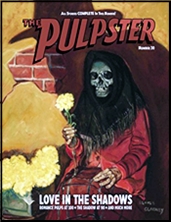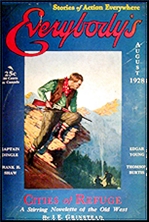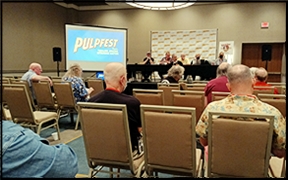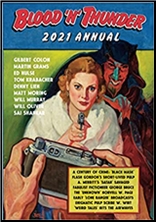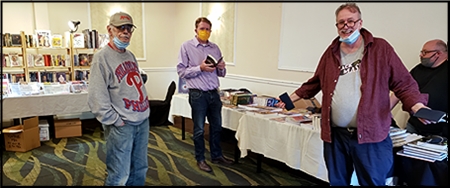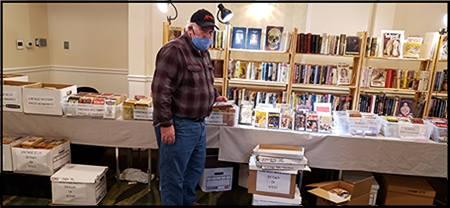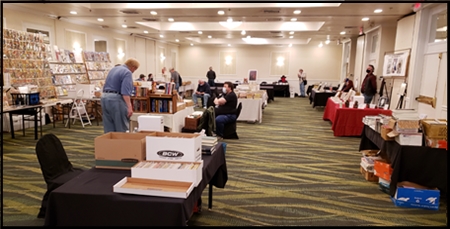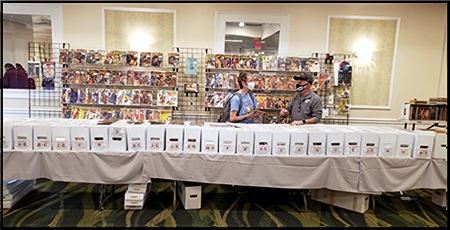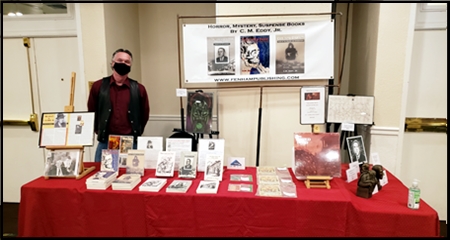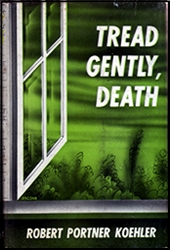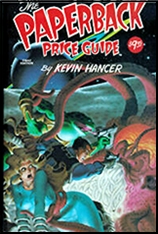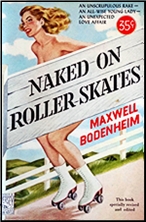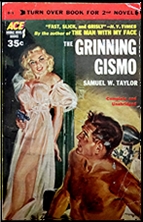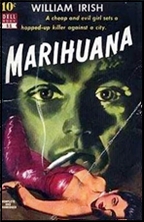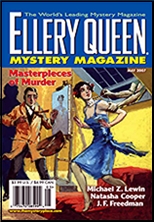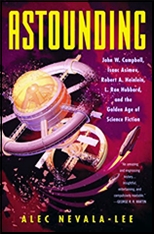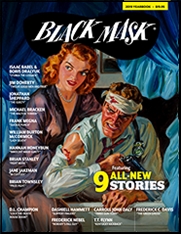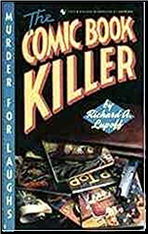CONVENTION REPORT: PulpFest 2018
by Walker Martin
Dedicated to the memory of Rusty Hevelin.
A TALE OF TWO CITIES by Charles Dickens is one of my favorite novels and starts off with the famous passage, “It was the best of times, it was the worst of times, it was the age of wisdom, it was the age of foolishness”. It continues later, “…it was the spring of hope, it was the winter of despair, we had everything before us, we had nothing before us…” This just about sums up my feeling after Pulpfest 2018.

So what happened? On the drive back home, what made me attack a vending machine which tried to keep my dollar bill? The thing was seven feet tall but somehow I was so energized and angry that I shook the small bag of pretzels loose. What made me walk away from arguing with a bunch of fellow collectors, muttering curses, and angry?
People that have known me for a long time know that the love of my life is Pulpcon/Pulpfest. I’ve been attending them since the first one in 1972. My vacation plans are always scheduled around the convention, I’ve attended them with severe back problems, once against the advice of both my chiropractor and physician. I’ve even gone to the show when my employer said I could not go. Like my good pal Harry Noble, I’d probably attend even knowing I had a terminal illness.
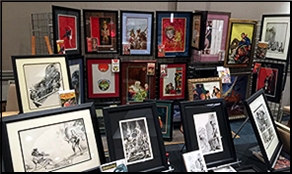
I see Pulpfest as a big event, a big party or picnic. I go to have a good time, not to argue with other collectors and finally walk away grumbling. I had heard rumors of a big announcement which was to be made at the business meeting. It still surprised me to hear the news that Pulpfest might go back to Columbus, Ohio next year and what’s more might be connected in some way with a comic book convention.
The committee mentioned that assistance would be provided by an unnamed comic book dealer and convention organizer. As far as I know only very few collectors questioned this plan. I was one plus one committee member said he agreed with me and a couple other collectors were also doubtful.
But most seemed to accept this news. You may notice I dedicated this report to Rusty Hevelin who was responsible for continuing Pulpcon for over 25 years. With Rusty I knew I could walk into the dealer’s room and not see piles of comic books, it would not be another science fiction convention, it would not be full of new pulp books written mainly by non-collectors and amateur writers. It would not be a nostalgia convention. By god, it would be a convention for pulp and book collectors even if only 100 to 200 showed up. They at least would be serious collectors often bringing boxes of pulps, books, vintage paperbacks, slicks, digest, and original art.
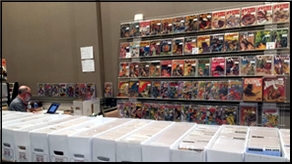
Everybody seemed to be moaning about how the attendance was not growing but was stuck at about 375. Still, this was far more than the old Pulpcon ever achieved in 37 years. There may be a thousand or so pulp collectors in the US. But most of them won’t ever come to Pulpfest because of health problems, financial problems, or they can’t get away from their job or family responsibilities. 400 and something is about the maximum that we can expect, though the Windy City Convention has claimed to break the 500 mark. I really don’t see any big increase in attendance being possible unless we want to import a ton of comic collectors, new pulp people and walk ins that seldom buy anything.
But I’m a pulp collector and I want to talk and deal with other pulp collectors. Many comic book collectors seem to like slabbing the books. I’m completely against this because I want to read the things. I don’t want them in a sealed plastic case. But comics are big money and pulps are not. I don’t see us co-existing at all. True, the committee has some personnel problems. Ed Hulse left a few years ago which I saw as a big blow. Bill Lampkin could not make it this year due to family responsibilities, Chuck Welch will soon be moving to Canada, Jack Cullers and Barry Traylor are my age which means they are getting older, to put it kindly.
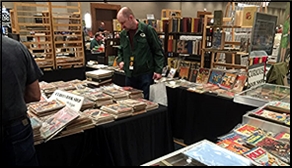
It’s time for me to talk about the convention and stop with my complaints, especially since I seem to have few supporters. Nothing has been decided yet by the committee and we will have to see what happens. I really like the Double Tree Hotel however and hope we return next year.
First, the programming was outstanding as usual. I skipped the new pulp presentations because I don’t care about new pulp. They mainly strike me as non-collectors and as I have said many times, collectors are my favorite type of people. But Thursday the best thing on the program was Sai Shankar talking about the great WW I author, Leonard Nason. I’ve often wondered why people travel to Pulpfest and then miss the programming due to the fact they are stuffing their face.
Well, I’ll be damned if I didn’t miss Sai Shankar, who is one of my friends, talking about one of my favorite ADVENTURE writers, Leonard Nason! His talk was scheduled for 8:40 and we sat down to eat in the hotel restaurant at 7:00 or perhaps even before 7:00. But the service was so slow that we were there forever and as a result we all missed Sai’s talk. Laurie Powers complained to the manager that due to the slow service we missed the program.
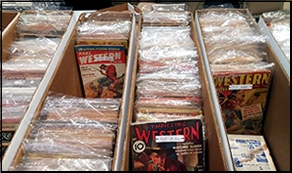
Friday, there were three panels I enjoyed mainly because I have problems with the subjects. I love the art of the men’s adventure magazines and have collected it in the past. I mean what is there not to love about Nazis turning girls into gold ingots? No wonder they lost the war! Bob Deis and Wyatt Doyle talked about the art and the fiction. I often have problems with the fiction but I love the magazines anyway. I know the WW II vets loved them also! They had a table full of their latest books including POLLEN’S WOMEN: The Art of Samson Pollen. I hope they can publish a reference book listing and discussing the many men’s adventure titles. We need such a guide book.
Then I liked the panel on the air war pulps hosted by Don Hutchison. Bill Mann, Chris Kalb and company are doing a great job reprinting many authors of the aviation magazines. I have problem reading these stories but I’m working on it and hope to someday be able to appreciate the fiction. Finally the son of John Fleming Gould talked about his father’s art.
Saturday, started off with the dreaded business meeting which just about ruined my evening but the announcement that Bill Lampkin had been awarded the Munsey Award cheered me up. Bill edits the excellent PULPSTER magazine and is also on the committee. Then the guest of honor, Joe Lansdale, was interviewed. David Saunders gave an excellent talk on the Art of the War Pulps. David discusses art at each Pulpfest and I hope this tradition continues.
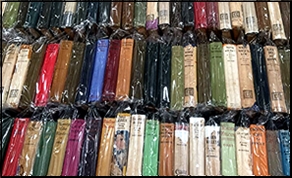
For just about the first time the auction was scheduled for two evenings at Pulpfest. Usually the auction is only one night but there was so many lots, over 400 total! Both nights the auction lasted from 10 pm to past 1 am. Some collectors griped that there was nothing at the auction. I disagree. Friday night saw a run of ARGOSY from the thirties, almost 600 issues of WILD WEST WEEKLY from 1927 through 1943, a set of PLANET STORIES, and many miscellaneous lots. The highest priced item by far was the five boxes of Al Tonik’s research papers. It went for $2000.00.
Saturday night saw many lots of WESTERN STORY, many sport titles, and the best conditioned set of SF digests that I have ever seen, and I’ve been collecting for over 60 years. The entire run of these magazines were in astonishing beautiful condition. Nice paper, new looking covers, that great scent of new magazines. I had them all but I was tempted to buy them all just for the beautiful condition. Seeing these lovely magazines reminded me once again about why I am a collector. They are beautiful. Sets of AMAZING, FANTASTIC, GALAXY, ASIMOV’S, ANALOG, F&SF, IF, NEW WORLDS, SCIENCE FANTASY, NEBULA, and IMAGINATION. The IMAGINATION set may be the prettiest thing I’ve seen in a long time. Though I had them all already, I bought the 5 lots making up the over 200 digest issues of AMAZING because the condition was just so much better than my own set.
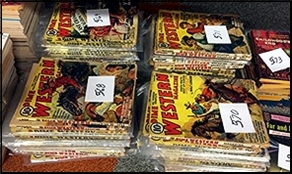
THE PULPSTER, number 27, was the usual excellent issue. 48 large size pages discussing Arthur Sullivant Hoffman’s ADVENTURE, the American Legion in ADVENTURE, artist George Evans and the aviation pulps, Philip Jose Farmer, and a great letter from a college student talking about her the summers she worked for Popular Publications.
I was told that attendance was around the 375 mark which I think was great. The dealer’s room was always buzzing with a lot of activity. The hospitality room was well stocked with craft beer and one night about a dozen pizzas were delivered.
Hopefully soon we will see two new magnificent books about pulp titles we seldom talk about. Laurie Powers book on the romance pulps and the life of Daisy Bacon, the excellent editor of LOVE STORY and DETECTIVE STORY. Michelle Nolan’s book on the sport pulp titles should also be a groundbreaking book on a seldom discussed topic. We desperately need books like these two because I’m tired of the same old hero pulp discussion. I know, I know, everyone loves the hero pulps but after all they were aimed at the teenage boy market and are not really adult fiction. Let’s talk about something new like love and sports!
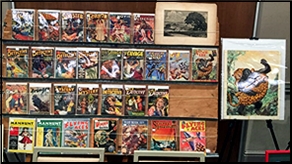
So, you may be wondering what did I buy? Actually this was one of the better Pulpfests for me finding unusual items. As I mention already above, I bought at the auction a lovely set of AMAZING, 1953-1980’s. Simply stunning condition. Here is a listing of what else I found of great interest:
1–Lot of 54 of the 71 isssues of AMRA. AMRA was a SF fanzine published between 1959 and 1982. Edited by George Scithers, it was famous mainly for the articles on Swords and Sorcery. The famous artists and authors that appeared in the magazine are too numerous to name but include Roy Krenkel, Poul Anderson, L. Sprague de Camp, Avram Davidson, Fritz Leiber, Michael Moorcock, and many more. AMRA won the Hugo for best fanzine in 1964 and 1968.
I bought these from Chet Williamson who also sold an interesting Hammett item to someone else and some rare ALL STORY issues. I was a subscriber to AMRA but I sold my issues a long time ago and now I’m rebuilding the set, something I done so many times, with so many magazines.
2–THE AGE OF THE STORYTELLERS: British Popular Fiction Magazines, 1880-1950 by Mike Ashley. This book was published at a hundred dollars but at only $25 I had to get this second copy to add to my first copy. That’s right, the book is so great that you must buy two copies!
3–A framed, signed drawing by the great Edd Cartier. This was only $225 so I had to add it to my Cartier collection which now numbers over 15 drawings. You can never have too many Cartier drawings.
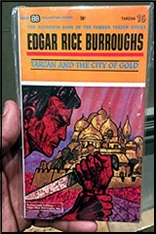
4–A framed painting by pulp collector Lester Belcher showing Sonny Tabor riding on a horse. I knew Lester and he was not an artist but he loved WILD WEST WEEKLY, so he attempted to paint one of the characters from the magazine. I consider it a great piece of “outsider” art done by one of my former friends that I miss. Price at the auction was only $10. Everyone thought it poorly done but to me, knowing Lester, it is priceless.
5–A Richard Powers painting for the Ballantine 1964 paperback, TARZAN AND THE CITY OF GOLD. Done in a different style than usual with Powers. After I bought it the art dealer told me two other collectors stopped by and were disappointed to learn that it had been sold.
6–Two Guest of Honor plaques from Pulpcon. I already have the one given to Walter Baumhofer but I couldn’t pass up these two. One was from 1994 and given to artist R. G. Harris in Tucson. It shows four cover paintings that he did for the pulps. The second is a real treasure since Elmer Kelton was one of the great western writers. It was given to him when he was the guest at the Pulpcon in 1998. It shows four covers from RANCH ROMANCES containing four of his early stories. I hunted for these plaques for decades, now I have three of them!
7–Now the most unusual story of them all. I now have three cover paintings of the paperback western BADLANDS BOSS by Bradford Scott. All by the same artist, Rudy Nappi. It’s possible that there is no other cover painting that was painted three times by the same artist. Back in the early 1980’s I bought the original cover painting at Pulpcon for $100.
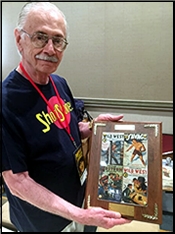
Then several years later I was at Al Tonik’s house for a Tonikcon and there was the same cover by Rudy Nappi also. Al explained that he was not aware the the original cover had survived and so he commissioned Rudy Nappi to paint an exact recreation of the cover. Price he paid was also $100. But the painting was damaged in the mail when the board was bent in order to stick in Al’s mailbox. So he contacted Nappi and told him the sad story and Nappi agreed to paint the painting again for no charge. So now Al had two paintings.
He gave me the damaged one and kept the good one. Actually you can’t see the damage until you look closely and see the board has been bent. Then after Al Tonik’s death what comes up for auction? The third Rudy Nappi cover painting of the same paperback. Since I had two I had to buy the third one also and got it for only $30 at the auction. You can’t make up such an insane story.
So ends my report. Despite my complaints, I truly appreciate the hard work of the committee. Thanks Mike Chomko, Jack Cullers, Sally Cullers, Bill Lampkin, Chuck Welch, and Barry Traylor. Plus the many helpers, and of course thanks to for Sai Shankar for the use of some of the photos he took during the convention. Stay tuned to pulpfest.com for news of next yea’s show.










